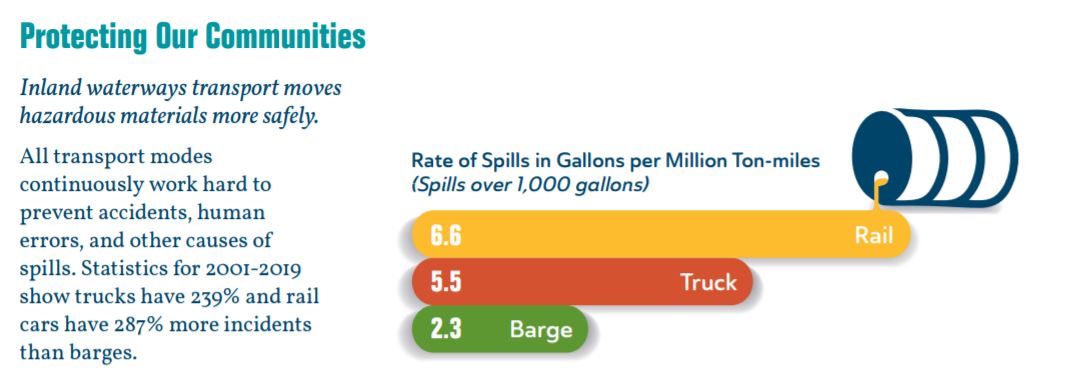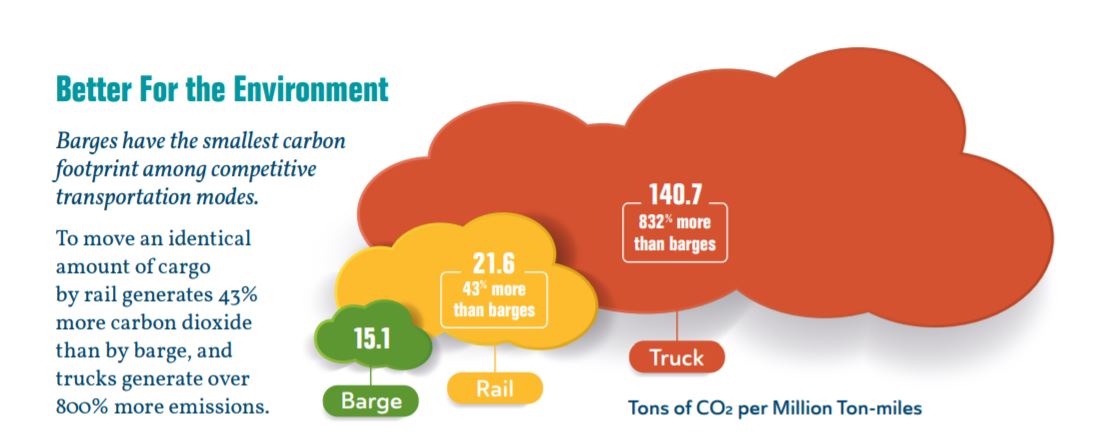ENVIRONMENTAL ADVANTAGES OF INLAND BARGE TRANSPORTATION
Inland barges carry approximately 15 percent of the nation’s freight at the lowest unit cost while offering an environmentally-sound alternative to truck and rail transportation.
THE INLAND BARGE INDUSTRY: IS ENERGY EFFICIENT
Number of miles one ton can be carried per gallon of fuel:
The measure of energy efficiency in transportation is the amount of energy used for the service provided, and can be expressed as the number of BTUs required to move one ton of cargo one mile (a ton-mile). In studies comparing rail, truck, and water, shallow-draft water transportation has been proven to be the most energy efficient method of freight transportation for moving bulk raw materials.
An analysis of rail and waterway fuel efficiency shows the average BTUs expended per ton-mile totals 433 for water transport, and 696 for rail transport. It is much more efficient to move cargo through water than over land.
Size is the key to water transport’s efficiency. The capacity (1,500 tons) of an inland barge, which can carry five times its own weight, is impressive, and the industry as a whole has enormous capacity. The cargo capacity of a barge is 15 times greater than one rail car and 60 times greater than one semi trailer. To move the same amount of cargo transported by a standard tow (15 barges) would require a freight train 2 3/4 miles long or a line of trucks stretching more than 35 miles. On the lower Mississippi, one 10,000 horsepower towboat can push 40 barges that have the carrying capacity of 600 railcars or more than 2,200 trucks.
Cargo Capacities
Barge
52,500 Bushels
453,600 Gallons
Rail
3,500 Bushels
30,240 Gallons
Truck
875 Bushels
7,560 Gallons

Lowest Carbon Footprint
Least Community Impact Moving cargo on the inland waterways is the best bet for reducing carbon footprint because barges generate far fewer emissions than trucks or rail. Barge transport also results in fewer spills, which are more than double by truck and nearly three times by rail.


